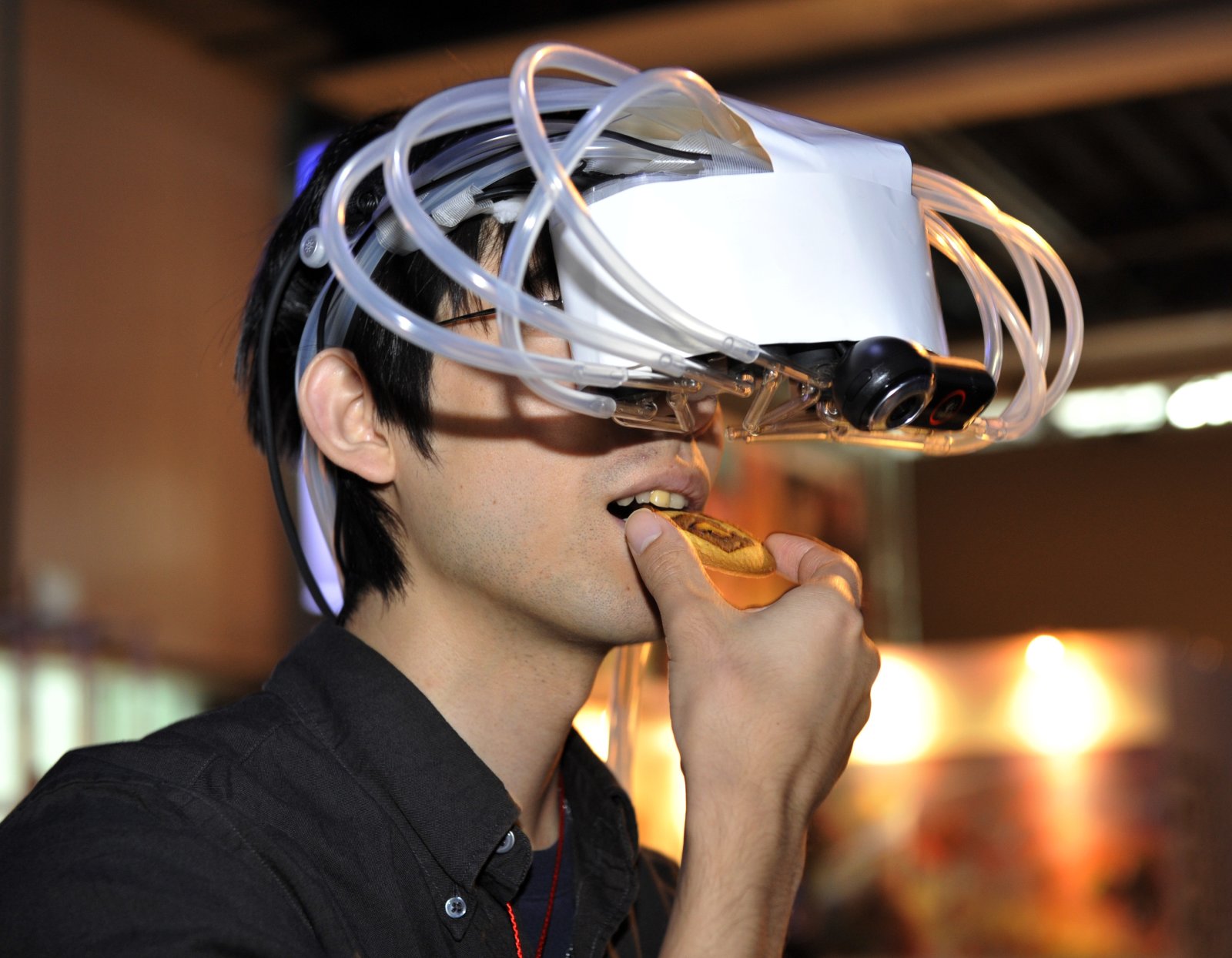Modern virtual reality is a treat for the senses. Well, two of them at least. “Sight and sound have been the staple of VR environments,” Benjy Li, a postdoctoral researcher with Stanford’s Virtual Human Interaction Lab, told Engadget. Haptic feedback is starting to allow for basic touch, but the next radical evolution in VR could actually come via your nose (and/or mouth).
Augmenting theatrical performances with scent is not a new gimmick, just one that has repeatedly failed to catch on. In 1959, AromaRama technology made its debut with the film The Great Wall. This system was capable of distributing scents through a theater’s air-conditioning system and change smells every 90 seconds. The New York Times was not impressed, calling it a “stunt” in its scathing review.
“The artistic benefit of it is here demonstrated to be nil,” NYT reviewer Bosley Crowther seethed. “While odors are wafted through the theatre, as the picture is going on, more or less in the nature of certain odors you might expect to accompany certain scenes, the accuracy of these odors is capricious, to say the least, and the flow of sensations from the ‘smell-track’ is highly irregular.”













